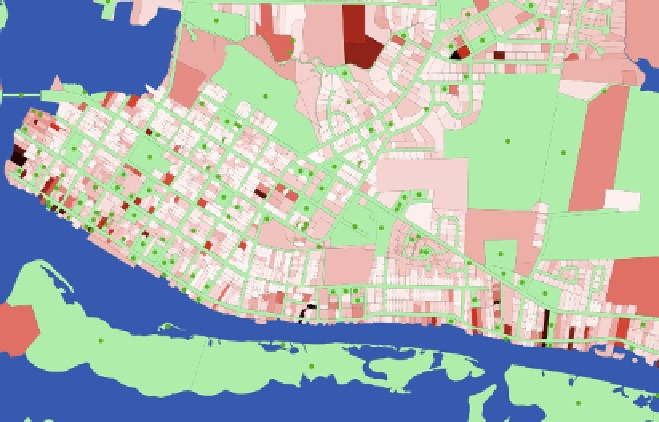Information Technology Reference
In-Depth Information
Fig. 3.
Color-gradient of property prices in a section of a city after a sequence of trades
3
Discussions
The model produces an adaptive price dynamics in a costal town as new households
arrive and search for locations and as some properties go for sale. Average price trend
is monitored separately for flood-prone and safe areas. At the conference we will
present and discuss the results in details.
The model presented above is the first stage of a four-year project. Thus, the pre-
sented model outline should be considered as a base model. Specifically, agents,
which are designed to make decisions under uncertainty following expected utility
approach, can be compared with agents operating according to the prospect theory
logic (Kahneman and Tversky, 1979). This ongoing work will develop along the fol-
lowing two lines in the future: (a) an introduction of individual risk perception evolu-
tion based on the theories of opinion dynamics (Acemoglu and Ozdaglar, 2010) in
addition to adaptive price learning dynamics; and (b) design and conduction of the
parallel experiments with human subjects in the lab and ABM. Lab experiments will
be used to acquire behavioural foundations about risk perception dynamics in a group
when hazard probabilities change. ABM will help extending these behavioural
patterns to larger (than in the lab) temporal and spatial scales.
References
Acemoglu, D., Ozdaglar, A.: Opinion Dynamics and Learning in Social Networks. M.I.T.
Working Paper Series. MIT, Cambridge (2010)
Alonso, W.: Location and Land Use. Harvard University Press, Cambridge (1964)

